Tom's Guide Verdict
The Raspberry Pi 4 is a big upgrade over past models, with more processing muscle, better video support and no compromises in price or capabilities.
Pros
- +
Significantly more powerful than past models
- +
USB 3.0 ports
- +
supports dual 4K video output
- +
Convenient USB Type-C power
Cons
- -
Not compatible with older Raspberry Pi cases
- -
Potential compatibility issues with some USB Type-C power cables
- -
Software compatibility is hit or miss
Why you can trust Tom's Guide
The Raspberry Pi line of single-board computers has been enormously popular, thanks to its super affordable price, compact size and maker-friendly design. The latest version, the Raspberry Pi 4 Model B ($55 as tested), is the most powerful yet, getting a major increase in processing power, enhanced video output and peripheral connectivity, while maintaining the same low price and tiny size offered on past models.
The new Pi 4 gets exciting features, like USB 3.0 ports, power over USB Type-C and Ethernet, and video output that will handle two 4K monitors at a time. Plus, you still get all the unique connectivity and expansion of the Pi's GPIO pins and compatibility with past add-ons and accessories. But all those changes do come with some new inconveniences. Because of the tweaks made to the Pi 4, the software used on older models is not directly compatible, and the updated port selection means that older case designs won't work with the new model.
One thing remains true about the latest Raspberry Pi, however. It's still the best mini PC for tinkering, and with the improvements to the Pi 4, it's proven itself to be one of the best computers period if you're looking to get a lot done with a little.
Editor's Note: (Mar 26, 2021) Since our initial review in 2019 the Raspberry Pi 4 Model B has continued to improve, with bug fixes and even a new version built inside a keyboard, the Raspberry Pi 400. Our initial rating and recommendation remain unchanged from when it originally published in October of 2019.
Raspberry Pi 4 Model B price and configurations
The Raspberry Pi 4 Model B is the first of the fourth generation of Raspberry Pi computers. The latest model brings with it a more powerful Broadcom BCM2711B0 quad-core ARM processor and the 4K-capable Broadcom VideoCore VI video processor, along with the move to faster USB 3.0 ports and USB Type-C for power.
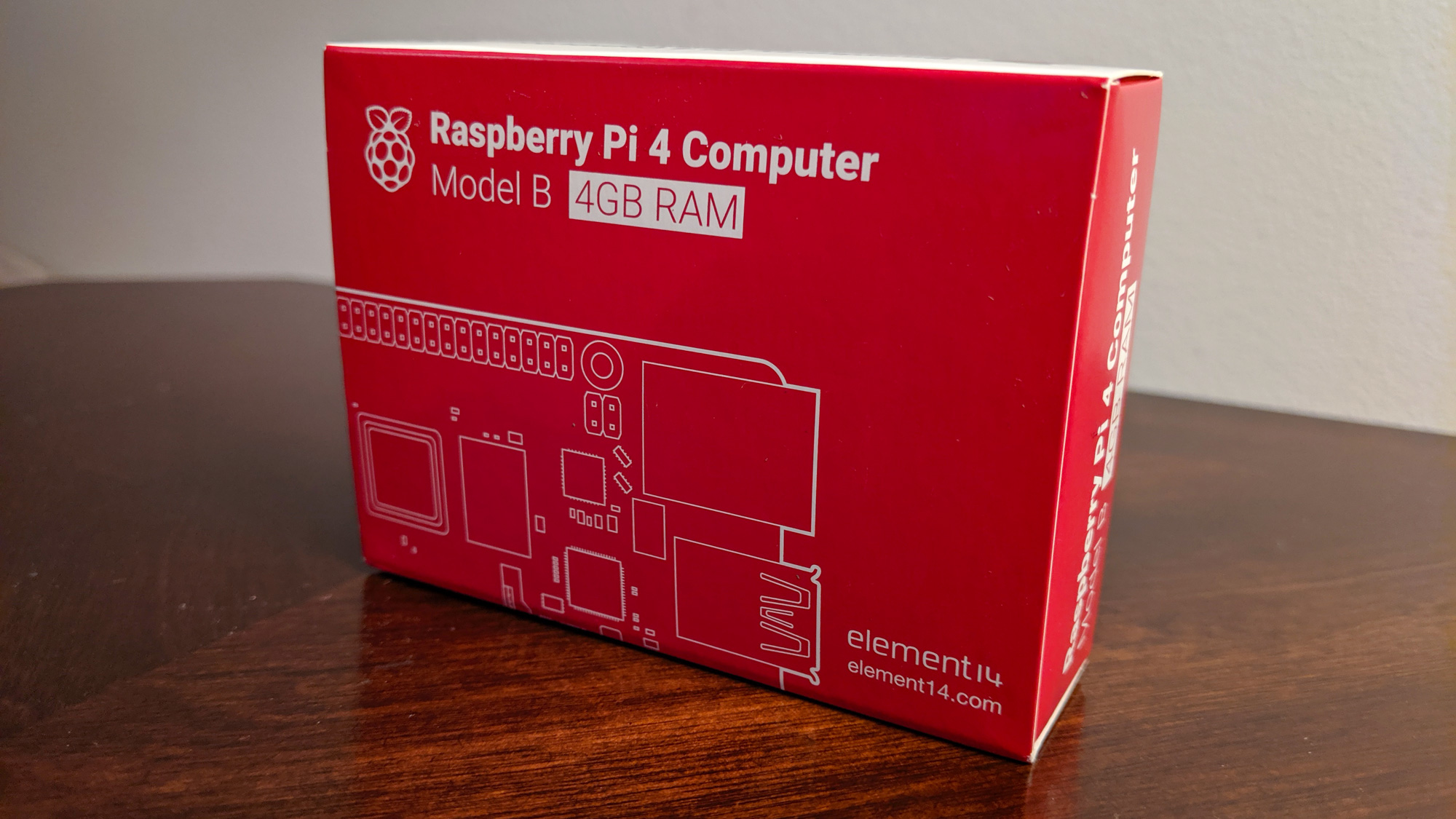
It's available in three variations, which differ only in the amount of LPDDR4 SDRAM installed on the board. The base model comes with 1GB of memory and sells for $35, maintaining the same low price the Pi has always had. A 2GB model doubles the memory for a price of $45, while the top model – and the model we reviewed – bumps the RAM to 4GB, for $55.
But the Raspberry Pi family is much larger than the Pi 4. Previous generations of the Pi are also available, including the Raspberry Pi 3 B+ we reviewed in 2018 and the Raspberry Pi 2 Model B we looked at in 2016. For applications where you may not need the extra processing power of the Pi 4, these are still superb options, delivering cheap single-board systems that can be programmed, connected to the web and used for everything from home automation to sophisticated robotics.
It's also worth looking at the naming conventions used to distinguish the various versions of the Raspberry Pi. The number – Pi 4, Pi 3, Pi 2, etc. – denotes which generation it is and will include improvements to both processing power and the layout of the board. The model designations (A, B and B+) indicate the specific design. The Model B is the standard, general-use single-board system, while the Model B+ boasts an iterative improvement in capabilities (the B+ models usually come between full generation changes). The Model A has a more compact design that ditches most of the bulky Ethernet and full-size USB ports found on the Model B and has a smaller footprint, but it still offers the same processor and capabilities.
And for something even smaller and less expensive, there's the Pi Zero ($10.00) and the Pi Zero W ($15.00). At roughly a third the size of the standard Raspberry Pi, it offers some (but not all) of the same functionality and is available with and without wireless connectivity – the "W" in Pi Zero W indicates the model comes with Wi-Fi and Bluetooth.
Raspberry Pi 4 Model B design
Famous in part for its small size, the Raspberry Pi line of inexpensive computers is famously no bigger than a deck of cards, and the Raspberry Pi 4 Model B measures just 3.4 x 2.2 x 0.4 inches. That puts it in the same 3.4 x 2.2 footprint offered on older models of the Raspberry Pi, but it's actually slimmer by almost a quarter inch. And it's almost identical in weight, weighing in at 46 grams (1.62 ounces) – just a gram heavier than previous generations, like the Raspberry Pi 3 B+ (45 grams, or 1.58 ounces).
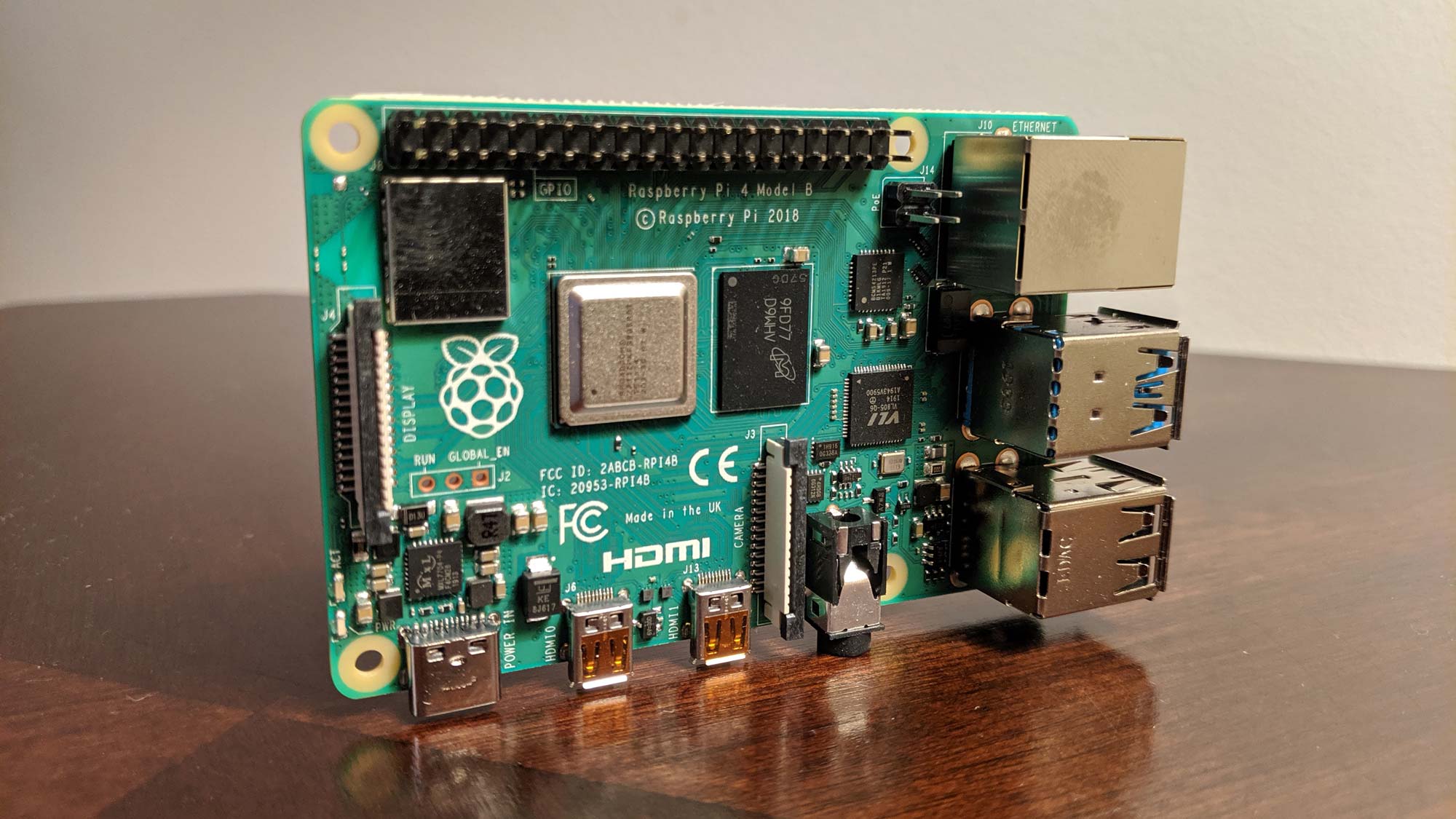
The actual design of the Raspberry Pi is pretty unique, both in terms of what it has to offer as well as what it doesn't. The small computer comes as a bare circuit board, without any sort of housing, or any of the niceties that you might get with a traditional mini PC, such as a cooling fan or even a power button. The Pi 4 is as bare bones as it gets.
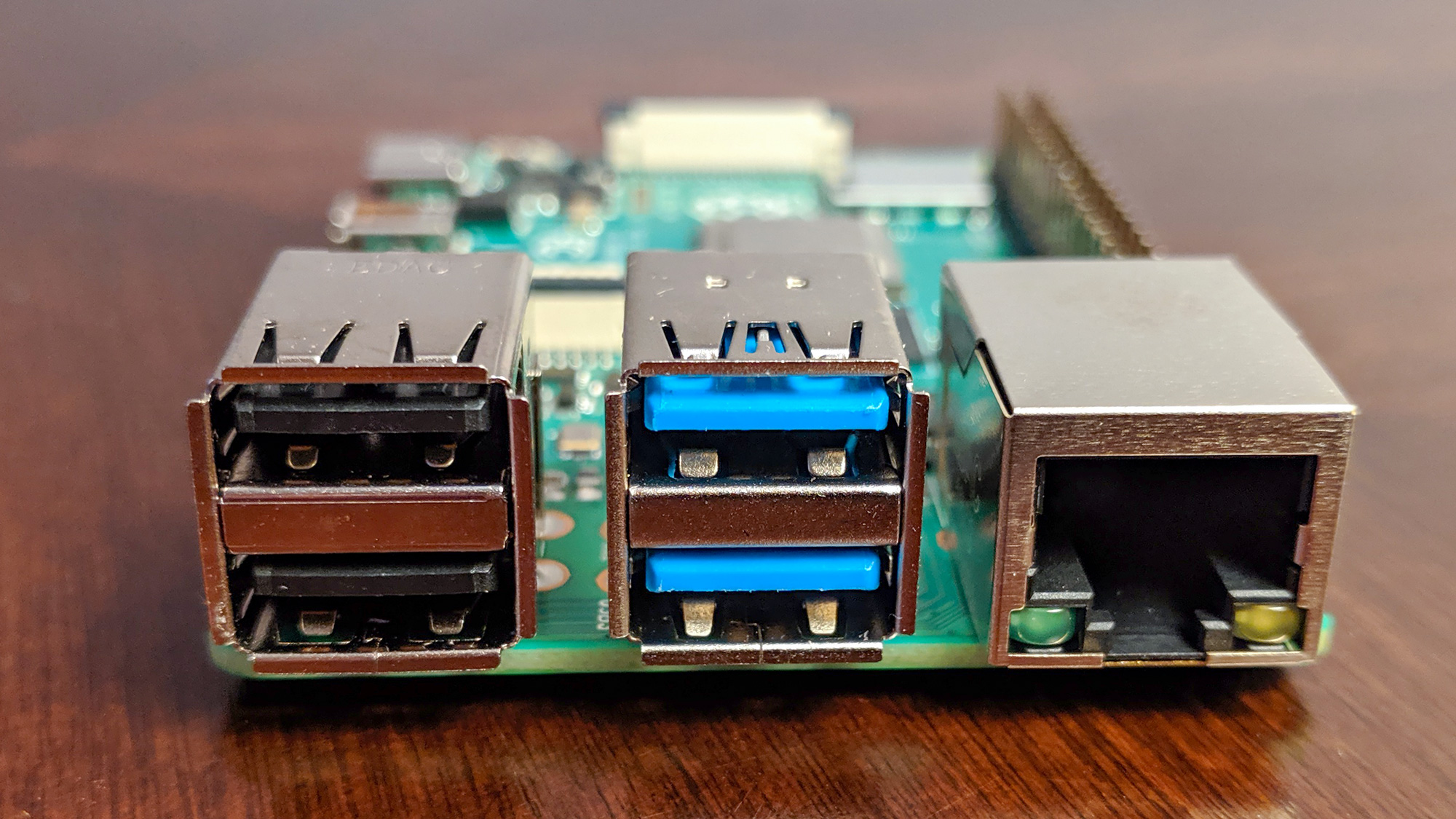
The list of ports on the Pi 4 also serves as a rundown of the few physical features offered on the small computer, with four USB ports (two USB 3.0 and two USB 2.0), a pair of micro HDMI 2.0 ports and a USB Type-C power jack. A 3.5-millimeter jack serves as an analog audio/video-out port; and Gigabit Ethernet – with full throughput, which wasn't offered on past models of the Pi – gives you wired networking and even power, thanks to Power over Ethernet support. For wireless networking, the Pi boasts both 802.11ac Wi-Fi and Bluetooth 5.0.
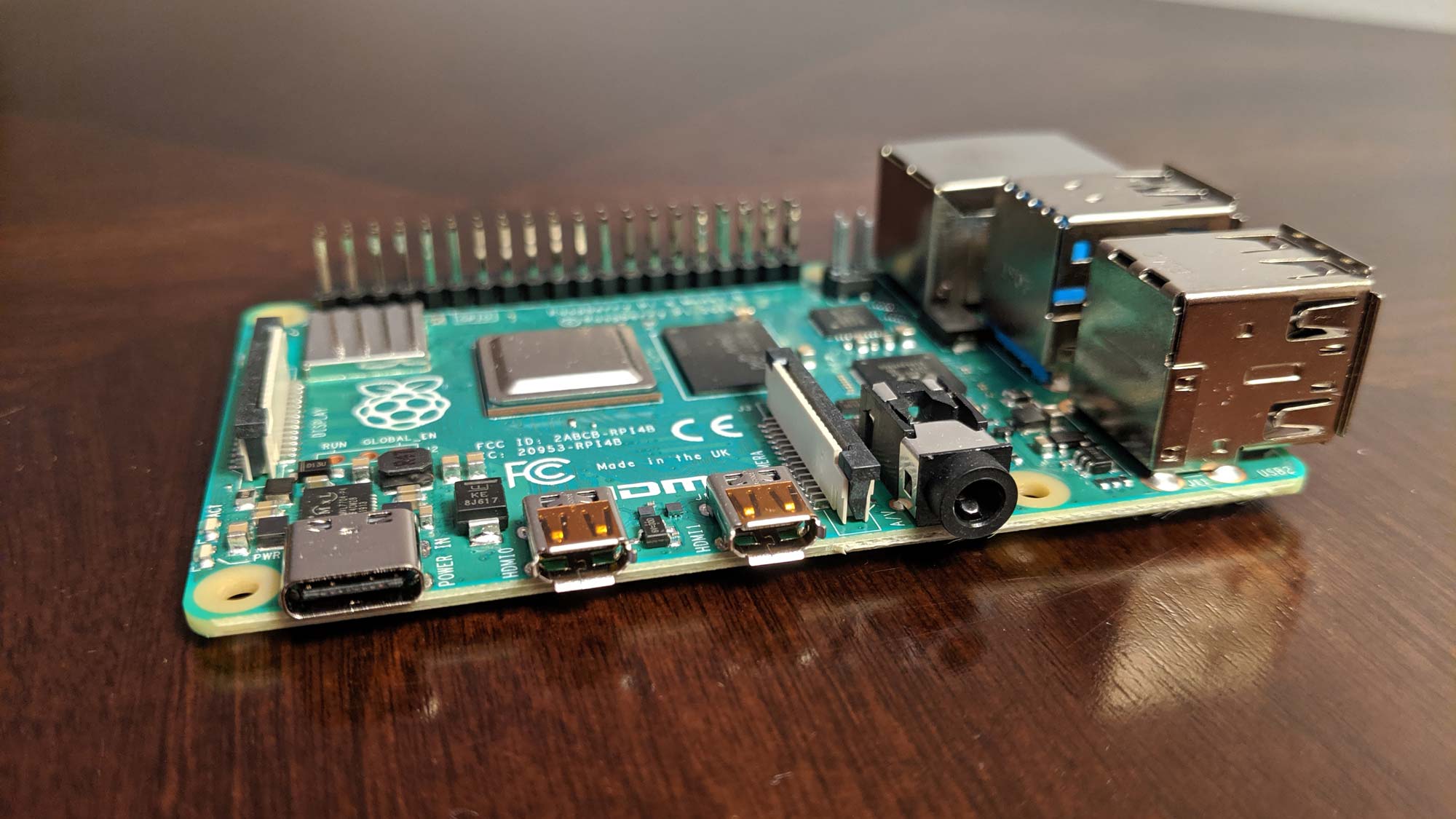
But in addition to these familiar ports and connections, the Pi 4 also delivers enormous flexibility. Less common ports include both Camera Serial Interface (CSI), Display Serial Interface (DSI) and a microSD card slot that lets you add storage to the Pi, which comes with no onboard storage of its own.
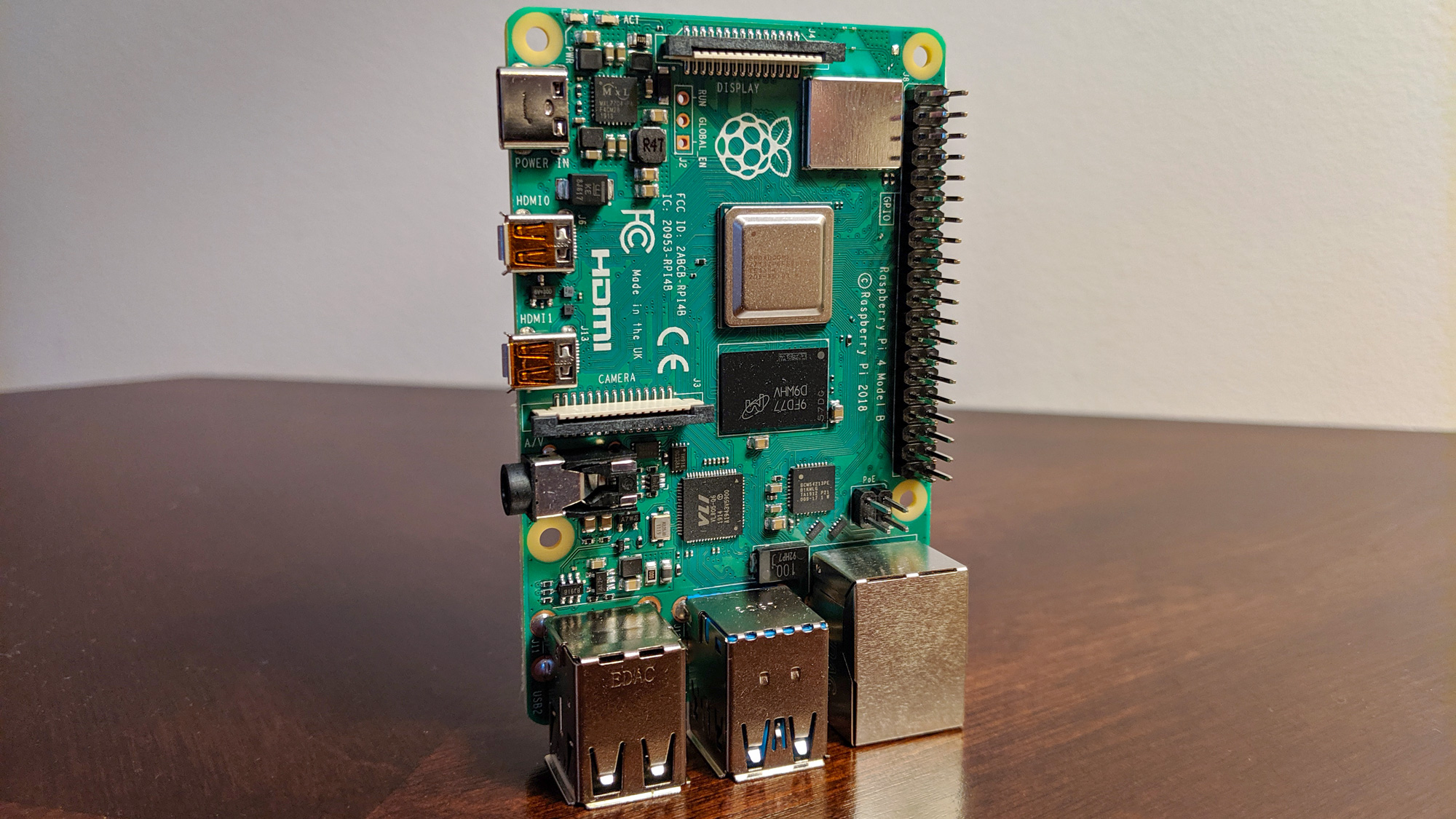
But the crowning feature of the Pi, in any iteration, is the 40-pin GPIO header. This bristling row of input/output pins provides direct access for connecting external devices. For the DIY tech enthusiast or maker, the Pi 4 is the best version yet of the fan favorite.
Raspberry Pi 4 Model B accessories
In addition to the Pi 4, we also picked up some accessories. Some were simply nice to have, like a case, while others are essential for using the Pi 4 in most situations.
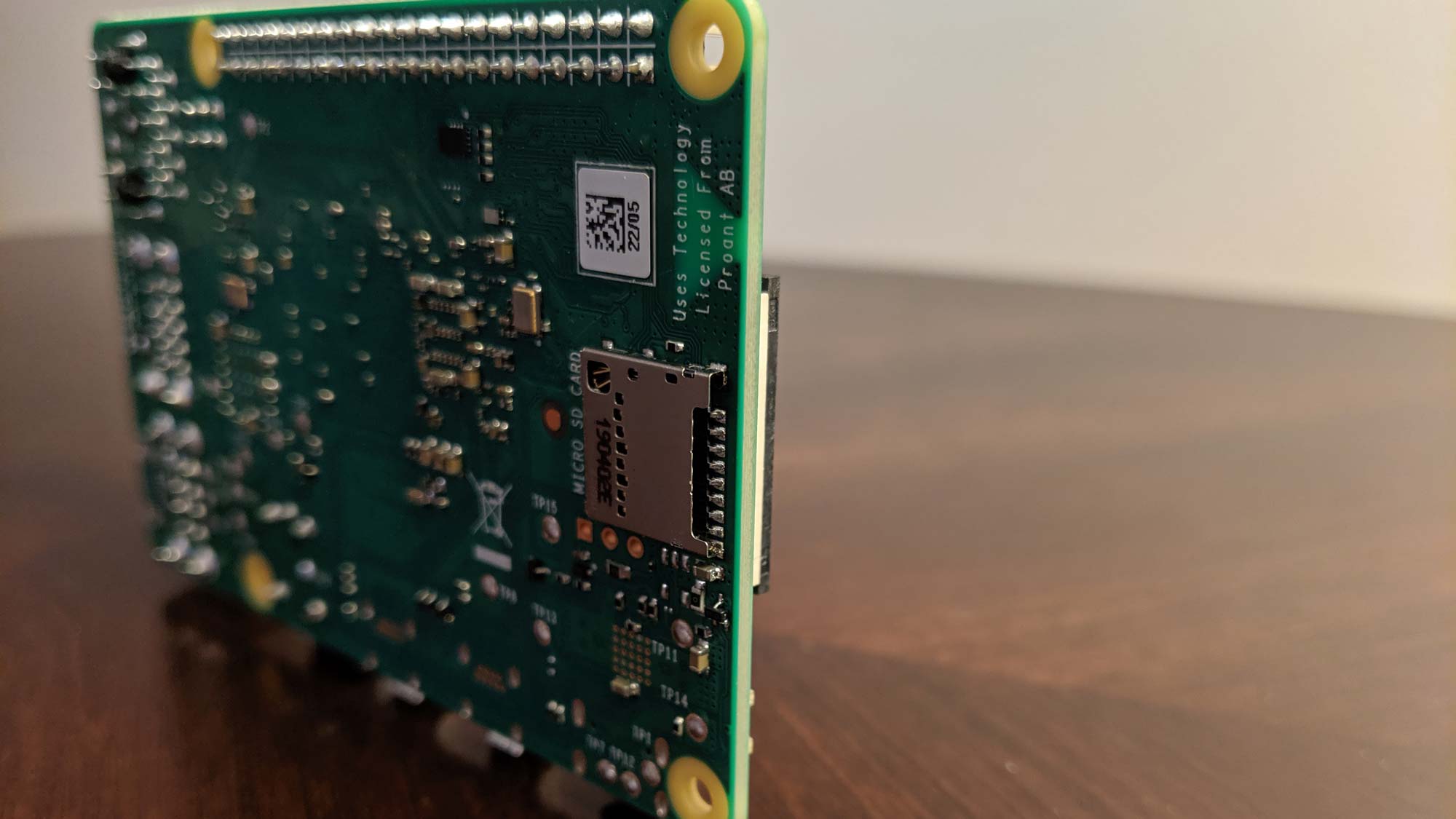
First, we acquired a SanDisk Ultra 32GB memory card. While many brands and capacities of microSD card will work, you will need something, since the card is used for onboard storage and is used for installing the Pi 4's operating system.
For power, we got the Raspberry Pi 4 official 15-watt power supply. This power cable sells for $9.99 and connects over USB Type-C, but unlike many third-party USB-C chargers you might be tempted to try using, such as a spare phone charger, this one is guaranteed to provide enough power to let you fully use the Pi 4.
And with the Pi 4 switching to micro HDMI connectors for video output, we also picked up a micro-to-standard HDMI cable ($8.99). While this will work with any HDMI-connected monitor or display (including TVs), the cable also supports the 4K video output offered by the new Pi 4. While these specific cables aren't the only option, the connections used on the Pi 4 do mean that you'll need some sort of adapter if you want to use any HDMI cables that you already own.
Other desktop basics, such as a wired mouse, wired keyboard and HDMI-connected monitor are also needed to use the RasPi 4 as a desktop. We had these things on hand already, but even older used models will work just fine.
MORE: 10 Cheap PC Keyboards (Under $20) Ranked from Best to Worst
Though it's not as essential for use as a power cable or video connection, we also decided to dress up the Pi 4 in a case. For this we used the Pimoroni Pibow 4 Ninja, a user-assembled case made up of five layers of custom-cut acrylic. The case is easy to put together, looks great and has handy laser-etched labels for ports. It also has a cutout for adding a heat sink or cooling fan, and it leaves all 40 GPIO pins and other ports accessible for all of your tinkering needs.
Raspberry Pi 4 Model B setup
When you first pull the Raspberry Pi 4 out of the box, it's nothing more than a circuit board, with plenty of potential, but none of the ready-to-go capability of a regular PC or laptop. The operating system doesn't come preinstalled – you'll have to do that yourself – and any peripherals, like a keyboard, mouse or monitor, will need to be acquired separately.
But even with your peripherals in place, you'll still need to install the software yourself. To start, you'll need to get your microSD card and download Raspbian Buster, the operating system developed by the Raspberry Pi Foundation specifically for the Pi 4 (though it will also work with past models). As the latest version of the Raspberry Pi-themed Linux variant, Raspbian Buster is updated to work with the new Pi 4, supporting the board's updated capabilities and features.
You can download Raspbian directly from the Raspberry Pi Foundation. Download the official image of the Buster operating system and copy it over to your microSD card. (Here are instructions, if needed.)
Once the Raspbian Buster image is on the microSD card, you can insert it into the card slot on the Pi 4 and (if everything was installed correctly) power up the Pi, which will automatically boot into the freshly installed OS.
MORE: Best Mini PCs - Small Computers for Work and Gaming
While these instructions will get you up and running, Raspbian Buster isn't the only option available for running your Raspberry Pi. Several Linux-based operating systems are freely available for the RasPi, though it may not be as easy to determine the compatibility of these systems with the Pi 4.
Finally, the popular game emulator RetroPie still doesn't have a Pi 4-compatible version. Since the development and maintenance of RetroPie is a volunteer effort, the delay is understandable. There are a couple of unofficial builds that may or may not work on the Pi 4, but an official release will be out eventually. (We'll update this portion of the review once it's out.)
Raspberry Pi 4 Model B software
Using Raspbian Buster on the Pi 4 gives you a standard desktop environment, albeit a basic, Linux-based one. Included in the initial installation package is a suite of programs that gives you basic web browsing and productivity tools, as well as a collection of educational apps that teach coding and provide tools for adapting the Pi to your own custom projects.
This includes handy productivity tools like LibreOffice and Chromium, which give you open-source alternatives to the Microsoft Office suite – including a word processor, spreadsheet program, presentations, drawing, database manager and an equation editor for math and science – and Google's Chrome web browser.
MORE: Best Robot Kits - Programmable Robotic Toys for Kids
Raspbian also comes loaded with software for education, giving you free tools for learning programming languages like Python, Scratch and Java. There are tools for making and playing games in Python, another called Sonic Pi that lets you make music, and there's even a version of Minecraft.
Raspberry Pi 4 Model B performance
The Pi 4 is outfitted with a 1.5-GHz, quad-core Broadcom BCM2711B0 (Cortex A-72) processor and comes with up to 4GB of LPDDR4 SDRAM in the top configuration – the model we reviewed.
Firing up the Pi 4, I was struck by two thoughts. First, I was amazed to see the Pi 4 support 4K output, at any frame rate. Earlier Pi models are mostly limited to 1080p, so the move to 4K is a major jump.
Second, I was struck by how smooth and responsive the Pi 4 was, especially compared with the Pi 3 B+ we reviewed last year. As I opened documents and test files, everything just worked, and the laggy performance I accepted as the inevitable reality of an inexpensive single-board computer like the Pi 3 B+ mostly disappeared on the Pi 4. This continued as I browsed online with multiple tabs open, and I was able to browse with eight to 10 tabs open without any noticeable lag.
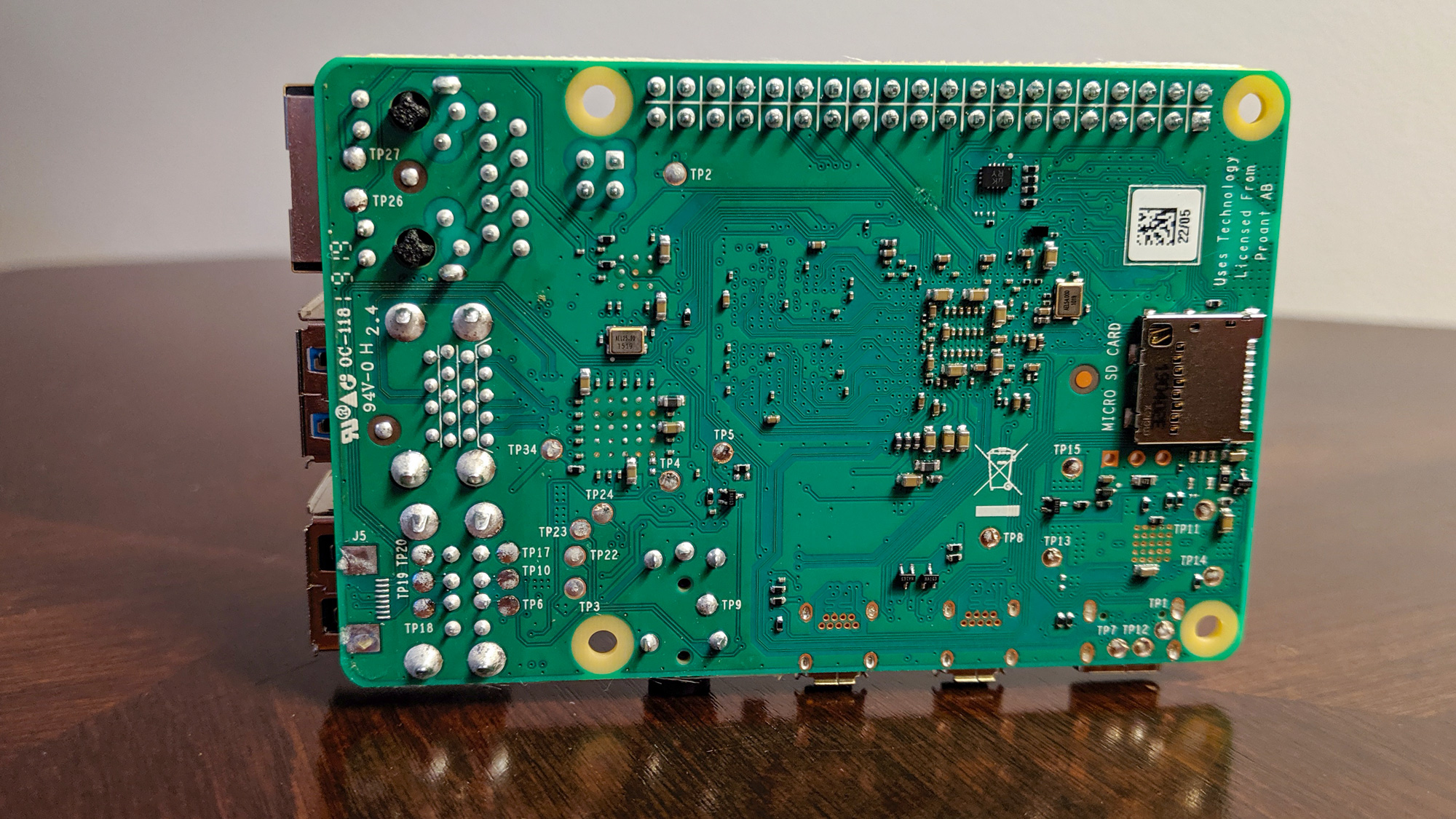
I was amazed to see the Pi 4 support 4K output, at any frame rate.
These first impressions were borne out in testing, as the Pi 4 put up results that were substantially better than the model we reviewed last year. While it's still no speed demon compared with other mini PCs, it's definitely the first time I've used the Pi and considered using it as a desktop beyond my initial testing. That this level of performance is available on such a tiny, inexpensive device is seriously impressive.
Everything is faster, starting with boot times. The Pi 4 went from a cold start to a usable desktop in just 23 seconds. That's a huge improvement over the older Pi 3 B+, which booted in 36 seconds; the earlier Pi 2 Model B was even slower, at 45 seconds.
While most of the tests we use on Windows-based mini PCs aren't available on the Linux-based Pi, we were able to compare a number of web-based performance benchmarks.
For general performance, we use the JetStream 1.1 browser performance test. In this benchmark, the Pi 4 scored 42.65 points. By comparison, the Pi 3 B+ scored only 16.7 points in the same test. That's a huge improvement for single-board systems. However, comparing this with more mainstream systems, like the Azulle Access3 (our favorite Windows stick PC) or the Acer Chromebox CXI3 puts this improvement into context. The Azulle Access3, which boasts an Intel Gemini Lake N4100 processor, scored 101.21 points in the same test. The Acer Chromebox did even better, notching a score of 168.22 points, thanks to its Intel Core i5 processor.
Graphics performance was similarly improved, but only impressive in a relative sense. Using WebGL Aquarium – a WebGL demo that lets you select set numbers of digital fish – the Pi 4 managed to render 50 fish at 3 frames per second (fps). Compared with the Pi 3 B+, which struggled with a single fish, that's a huge improvement. But compared with the Acer Chromebox CXI3, which handled as many as 10,000 fish at 28 fps, the Pi 4's graphics support is still pretty paltry.
However, loading up websites on the Pi 4's Chromium browser wasn't much quicker than it's been on other Raspberry Pi models we've seen before. Loading up the Tom's Guide homepage took a quick 2 seconds. The older Pi 3 B+ did the same in 11 seconds.
YouTube, on the other hand, opened in 11.7 seconds, which was actually a slight drop from both the Pi 3 B+ (10 seconds) and even the Pi 2 B (also 10 seconds).
Oddly enough, opening a lightweight site like Stack Exchange, which is mostly text, wasn't much faster; it took 3 seconds – only a second faster than the Pi 3 B+ (4 seconds) — which was, in turn, only slightly faster than the Pi 2 B (5 seconds).
MORE: 15 Great Uses for a Raspberry Pi
However, unlike past versions of the Pi, the newer Pi 4 was able to actually run more than one or two tabs at once. I was even able to work in a Google Doc to work on the first draft of this review while also researching specifications in another window and watching a related YouTube tutorial in a third. That level of (admittedly basic) multitasking wasn't really possible on older models.
One other issue worth noting about the Pi 4 is that it runs hot — much hotter than its predecessor, the Raspberry Pi 3 B+. While the Pi 3 B+ would get warm when under load (up to 142 degrees Fahrenheit), the Pi 4 gets much hotter — up to 168 degrees Fahrenheit in our testing. That heat makes it imperative that you outfit your Pi with a case, so as to avoid burned fingers or even accidental fires. But it also will have an impact on performance, since the system will throttle performance when it runs too hot.
And for optimal performance, you would do well to outfit your own Pi 4 with heat sinks for the CPU and GPU, or perhaps a fan (available on many Pi 4 cases), or both.
Raspberry Pi 4 Model B projects, expansions and kits
Between its small size, superlow price and ultraflexible form factor, the Pi 4 is the most powerful version of the best tinkering PC on the market. But what can you actually do with it?
As a member of the Raspberry Pi family, the Pi 4 has an ecosystem of accessories available for it, as well as a rich community of enthusiasts and makers who have used the Pi for all sorts of projects and are often willing to offer help and answer questions through the many Pi-centric forums and communities online.
MORE: Best Google Home Commands - Things That Google Assistant Can Do
That ecosystem includes all sorts of add-ons for the Pi that connect through the many ports and GPIO pins. Called hats, bonnets and shields, depending upon the specific design and connectivity of the add-on, these expansions make the Pi 4 (and other models of the Pi) immensely more flexible than your average PC. Most of the hats that have worked with previous Raspberry Pi models will still work on the Pi 4, since it uses a nearly identical GPIO pin layout.
Between its small size, superlow price and ultraflexible form factor, the Pi 4 is the most powerful version of the best tinkering PC on the market.
These add-ons range from the simple to the extremely technical. You can get microphone extension boards, perfect for building your own Amazon Echo or Google Home. You can add display boards, for making the Pi 4 a handheld computing device – options include multicolored e-ink displays, touch screens and more. Motor boards and servo hats are great for building remote-control vehicles and robots, speaker bonnets let you roll your own streaming music player, and you can even get a pair of small displays that are made to let you add animated eyes to a costume.
And, if you want something that's a little less intense, but still lets you scratch that itch for DIY tech, there are plenty of kits that let you assemble and experiment, while still holding your hand as needed. There are basic kits for getting started with the Pi 4, which bundle the Pi 4 with accessories like cables, a case and even a preloaded microSD card. Past versions of the Pi have also had gaming kits offered, like a DIY retro console, complete with game controllers, or a build-it-yourself arcade-style fightstick kit, to help you get the real retro gaming feel at home. There aren't many gaming kits out for the Pi 4 just yet, but that will likely change once gaming support improves for the newest member of the RasPi family.
Raspberry Pi 4 Model B: Verdict
The Raspberry Pi concept has already proven itself a winner, with millions of the single-board computers sold and used in everything from gaming to home automation and robots. But the latest release, the Raspberry Pi 4 Model B, takes the already amazing Pi concept to new heights, with processing power that lets you use the cheap little computer as a basic desktop, and features like 4K video output that were unthinkable only a year or two back.
The Pi 4 isn't perfect. It runs hot and still has limitations that even the most basic stick PC won't be slowed by. Even some of the software that's readily available for other Pi systems isn't fully baked for the Pi 4, like RetroPie. All of this is on top of the fact that the Raspberry Pi platform asks a lot of its users, and it has a pretty steep learning curve. If user-friendly capability is what you want, you may be better served by something like the Azulle Access3, which gives you a full Windows PC for a couple hundred bucks.
But if you've ever wanted to make your own smart mirror (or weather station, or internet radio, or game arcade cabinet, or … you get the idea), there's nothing out there that matches the Pi's unique mix of accessibility, supporting community, accessory ecosystem and outright affordability. And the Raspberry Pi 4 delivers all of that with better features and more power than its predecessors, all for the same low price.
The Raspberry Pi 4 Model B is the best computer out there for tinkering and creating, hands down.
Brian Westover is currently Lead Analyst, PCs and Hardware at PCMag. Until recently, however, he was Senior Editor at Tom's Guide, where he led the site's TV coverage for several years, reviewing scores of sets and writing about everything from 8K to HDR to HDMI 2.1. He also put his computing knowledge to good use by reviewing many PCs and Mac devices, and also led our router and home networking coverage. Prior to joining Tom's Guide, he wrote for TopTenReviews and PCMag.


